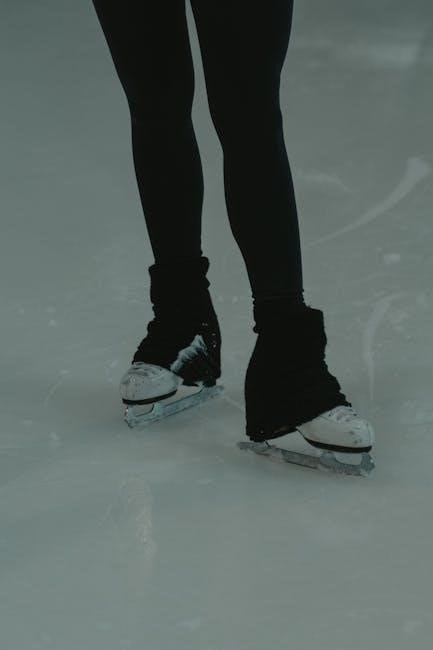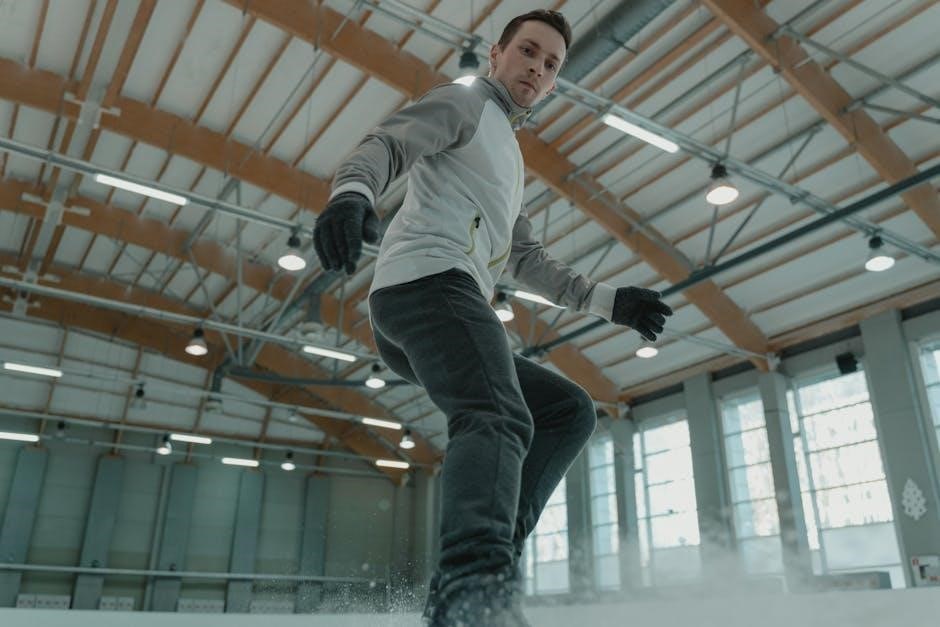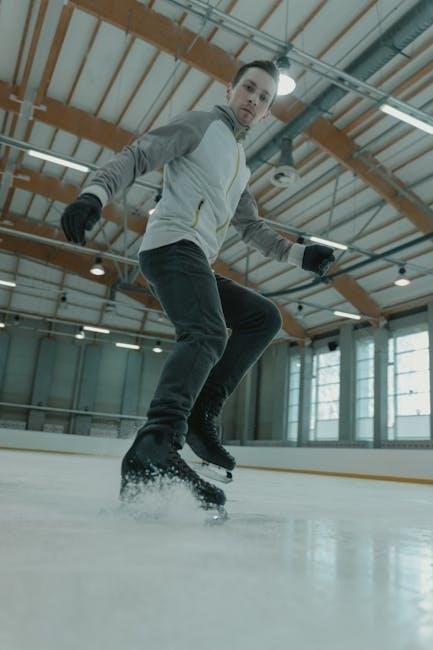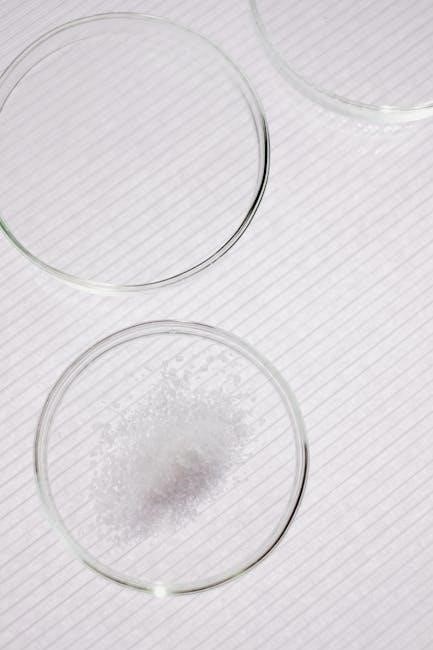Understanding Posterior Tibial Tendon Dysfunction (PTTD)
What is PTTD?
Posterior Tibial Tendon Dysfunction (PTTD) occurs when the posterior tibial tendon‚ which supports the arch of the foot‚ becomes inflamed or torn. This affects flexibility‚ stability‚ and strength.
What is PTTD?
Posterior Tibial Tendon Dysfunction (PTTD) is a condition affecting the posterior tibial tendon‚ a crucial structure supporting the arch of the foot. When this tendon becomes inflamed‚ stretched‚ or torn‚ it can no longer effectively perform its primary function‚ leading to a flattening of the foot’s arch. This dysfunction can arise from overuse‚ injury‚ or underlying conditions. Individuals experiencing PTTD may initially notice pain along the inside of the ankle and foot. As the condition progresses‚ the arch gradually collapses‚ causing further pain and discomfort. If left unaddressed‚ PTTD can significantly impact mobility and quality of life. Early diagnosis and intervention‚ including exercises‚ proper footwear‚ and orthotics‚ are essential for managing PTTD and preventing further deterioration. The exercises are focused on rehabilitation.
Symptoms of PTTD
The symptoms of Posterior Tibial Tendon Dysfunction (PTTD) can vary depending on the stage of the condition. Initially‚ individuals may experience pain along the inside of the ankle and foot‚ often worsening with activity. Swelling and tenderness in the same area are also common early indicators. As PTTD progresses‚ the arch of the foot may begin to flatten‚ leading to a noticeable change in foot shape. This flattening can cause pain to shift to the outside of the ankle.
Standing for extended periods or participating in activities that put stress on the foot may become increasingly difficult and painful. In advanced stages‚ the foot may become rigid‚ making walking and other movements challenging. Early recognition of these symptoms is crucial for seeking timely medical attention and initiating appropriate management strategies. These strategies includes exercises‚ orthotics‚ and lifestyle adjustments.

Benefits of Exercise for PTTD
Exercises help manage PTTD symptoms by strengthening muscles‚ improving flexibility and stability. Home exercises and physical therapy improve range of motion and balance‚ preventing further injury and reducing pain.
Strengthening Muscles
Strengthening exercises play a crucial role in managing Posterior Tibial Tendon Dysfunction (PTTD). A key exercise involves focusing on the posterior tibialis muscle itself. This can be achieved through towel exercises‚ where the foot is gently pulled inward against resistance‚ building strength in the tendon.
Additionally‚ strengthening surrounding muscles‚ such as the calf muscles (gastrocnemius and soleus)‚ provides extra support and stability to the ankle and foot. Calf raises‚ both with straight and bent knees‚ are effective for targeting these muscles. Banded exercises‚ using resistance bands to perform inversions and eversions‚ further enhance muscle strength around the ankle.
Properly loading the posterior tibialis during exercise is essential. Exercises like heel raises with a focus on pushing through the big toe can help achieve this. Consistent strengthening helps to stabilize the foot‚ reduce pain‚ and improve overall function.
Improving Flexibility and Stability
Improving flexibility and stability is paramount in PTTD management. Flexibility exercises‚ such as calf stretches‚ are crucial for preventing stiffness and maintaining range of motion in the ankle. Stretching the calf muscles‚ including both the gastrocnemius and soleus‚ helps alleviate tension and improve ankle dorsiflexion.
Stability exercises‚ like balancing on one foot‚ enhance proprioception and strengthen the muscles responsible for maintaining balance. Using a wobble board or balance disc can further challenge stability and improve ankle control. Ankle range of motion exercises‚ including ankle circles and alphabet tracing with the foot‚ promote joint mobility and reduce stiffness.
Calf jumps or pogo jumps can also improve ankle stability. Consistent practice of these exercises helps to restore proper foot and ankle mechanics‚ reducing the risk of further injury and improving overall stability. Integrating these exercises into a rehabilitation program is essential for long-term PTTD management.
Pain Management
Effective pain management is a key component of PTTD treatment. Exercise plays a significant role in reducing pain by strengthening supporting muscles and improving joint mechanics. Gentle range of motion exercises can help alleviate stiffness and reduce pain sensitivity. Low-impact activities‚ such as swimming or cycling‚ can provide a cardiovascular workout without placing excessive stress on the affected tendon.
Strengthening exercises‚ particularly those targeting the posterior tibialis muscle and surrounding musculature‚ help stabilize the ankle and foot‚ reducing strain on the tendon. Consistent exercise can also stimulate the release of endorphins‚ natural pain relievers that can help manage discomfort. It’s crucial to start slowly and gradually increase the intensity of exercises to avoid exacerbating pain.
If pain increases during exercise‚ it’s important to modify or stop the activity. Combining exercise with other pain management strategies‚ such as ice‚ elevation‚ and pain medication‚ can provide comprehensive relief. Consulting with a physical therapist ensures a tailored approach to pain management through exercise.

PTTD Exercises: A Comprehensive Guide
This guide provides comprehensive exercises for Posterior Tibial Tendon Dysfunction (PTTD) rehabilitation. These exercises aim to strengthen the posterior tibialis‚ improve flexibility‚ and enhance ankle stability.
Posterior Tibialis Strengthening Exercises
Strengthening the posterior tibialis muscle is crucial in PTTD rehabilitation. These exercises aim to improve the tendon’s function and provide support for the foot’s arch. Begin each exercise slowly and gradually increase repetitions as tolerated. It’s important to listen to your body and avoid pushing through pain.
Heel Raises: Stand with feet hip-width apart. Slowly rise onto the balls of your feet‚ emphasizing pushing through your big toe. This engages the posterior tibialis. Lower slowly. Repeat this exercise.
Inversion Exercises: Use a resistance band looped around your foot. Turn your foot inward against the resistance‚ focusing on the posterior tibialis muscle. Control the movement both inward and outward.
Marble Pickups: Sit in a chair with marbles and a bowl on the floor. Pick up marbles with your toes and place them in the bowl. This helps strengthen the muscles in your foot and ankle‚ supporting the posterior tibialis.
Calf Stretches for PTTD
Calf stretches are essential in managing PTTD as tight calf muscles can exacerbate the condition by increasing stress on the posterior tibial tendon. Regular stretching improves flexibility‚ reduces strain‚ and promotes proper foot and ankle mechanics. Perform these stretches gently‚ holding each for at least 30 seconds.
Gastrocnemius Stretch: Stand facing a wall‚ placing one foot slightly behind the other. Keep your back leg straight with your heel on the ground. Lean forward until you feel a stretch in your upper calf. Hold the stretch.
Soleus Stretch: Perform the same stretch as above‚ but bend your back knee slightly. This targets the soleus muscle‚ located deeper in the calf. Hold the stretch‚ feeling it lower in your calf.
Towel Stretch: Sit with your leg extended and loop a towel around your foot. Gently pull back on the towel‚ keeping your knee straight‚ to stretch your calf. Hold the stretch.
Ankle Range of Motion Exercises
Ankle range of motion exercises are critical for maintaining joint health and reducing stiffness associated with PTTD. These exercises improve circulation‚ synovial fluid production‚ and overall ankle mobility. Perform these exercises slowly and deliberately‚ avoiding any movements that cause significant pain. Aim for a full‚ pain-free range of motion with each repetition.
Ankle Dorsiflexion and Plantarflexion: Sit with your leg extended. Point your toes up towards your shin (dorsiflexion) and then point your toes down away from your shin (plantarflexion). Repeat this movement‚ gradually increasing the range of motion.
Ankle Inversion and Eversion: Sit with your leg extended. Turn your foot inward‚ bringing the sole of your foot towards the midline of your body (inversion). Then‚ turn your foot outward‚ bringing the sole of your foot away from the midline (eversion). Repeat this movement.
Ankle Circles: Rotate your ankle in a circular motion‚ both clockwise and counterclockwise.

Rehabilitation Strategies and Exercise Frequency
Rehabilitation requires consistent exercise to rebuild strength and mobility. A structured schedule‚ coupled with proper strategies‚ ensures optimal recovery and prevents further injury from PTTD.
Importance of Consistent Exercise
Consistent exercise is paramount in managing and rehabilitating Posterior Tibial Tendon Dysfunction (PTTD). Regular physical activity helps in strengthening the weakened posterior tibial tendon and the surrounding muscles that support the foot and ankle. Consistent exercise not only aids in muscle strengthening but also significantly improves flexibility and stability‚ which are crucial for proper foot function.
By adhering to a regular exercise routine‚ individuals can experience a noticeable reduction in pain and discomfort associated with PTTD. The exercises promote better blood flow to the affected area‚ facilitating healing and reducing inflammation. Moreover‚ consistent engagement in rehabilitation exercises helps prevent the condition from worsening and reduces the likelihood of future complications or injuries. Consistency helps maintain the gains made in strength and flexibility‚ ensuring long-term foot health and stability. Therefore‚ integrating exercise into daily routines is essential for managing PTTD effectively.
Recommended Exercise Schedule
A well-structured exercise schedule is vital for effectively managing Posterior Tibial Tendon Dysfunction (PTTD). Initially‚ it’s advisable to start with a low-intensity routine‚ performing exercises every other day to allow the tendon and surrounding muscles adequate time to recover. Begin with shorter sessions‚ around 15-20 minutes‚ gradually increasing the duration and intensity as tolerated. Incorporate a variety of exercises targeting the posterior tibialis muscle‚ calf muscles‚ and ankle range of motion.
As strength and flexibility improve‚ the frequency can be increased to 5-7 times per week‚ as tolerated‚ ensuring not to push beyond pain thresholds. It’s important to listen to your body and adjust the schedule accordingly. A typical session should include warm-up exercises‚ strengthening exercises‚ stretches‚ and cool-down activities. Consistency is key‚ so adhering to a regular schedule‚ even on less intense days‚ will yield the best results. Always consult with a physical therapist to tailor the exercise schedule to your specific needs and condition severity.

Additional Considerations for PTTD Management
Selecting supportive footwear and considering orthotics are crucial aspects of PTTD management‚ complementing exercises to provide stability and alleviate stress on the posterior tibial tendon.
Proper Footwear and Orthotics
Proper footwear plays a vital role in managing Posterior Tibial Tendon Dysfunction (PTTD). Choose shoes that offer good arch support‚ cushioning‚ and stability to minimize stress on the affected tendon. Stiff-soled shoes or those with motion control features can help control excessive pronation‚ a common factor contributing to PTTD.
Orthotics‚ such as custom or over-the-counter arch supports‚ can provide additional support and alignment to the foot and ankle. They help redistribute weight and reduce strain on the posterior tibial tendon‚ promoting healing and reducing pain. Custom orthotics‚ prescribed by a podiatrist or orthopedist‚ are often recommended for individuals with more severe PTTD or foot deformities.
Combining appropriate footwear with orthotics can significantly improve comfort and function‚ allowing for more effective participation in PTTD exercises and rehabilitation.
When to Seek Professional Help
While exercises and conservative measures can effectively manage many cases of Posterior Tibial Tendon Dysfunction (PTTD)‚ it’s crucial to recognize when professional help is necessary. If you experience persistent or worsening pain despite adhering to a consistent exercise program‚ consult a podiatrist‚ orthopedist‚ or physical therapist.
Seek immediate medical attention if you notice a sudden increase in pain‚ swelling‚ or instability in your foot and ankle. These symptoms may indicate a more severe tear or rupture of the posterior tibial tendon‚ requiring prompt intervention.
Additionally‚ if you have tried various exercises and self-care strategies for several weeks without significant improvement‚ a professional evaluation can help determine the underlying cause of your symptoms and guide appropriate treatment options. Early diagnosis and intervention are essential for preventing long-term complications and restoring optimal foot function.


